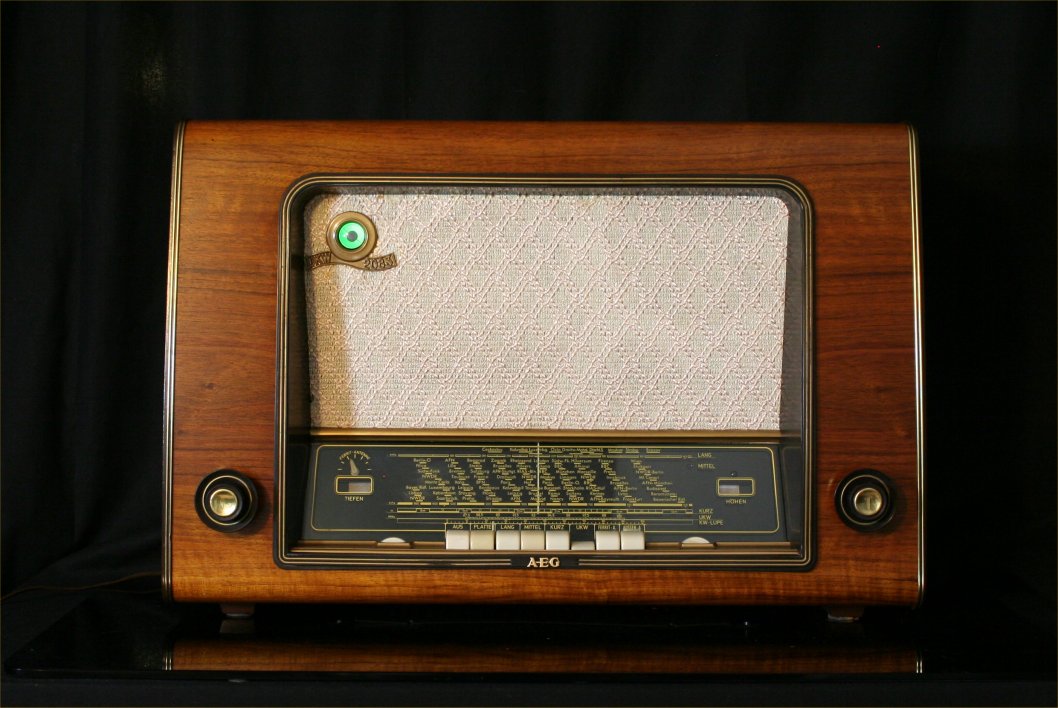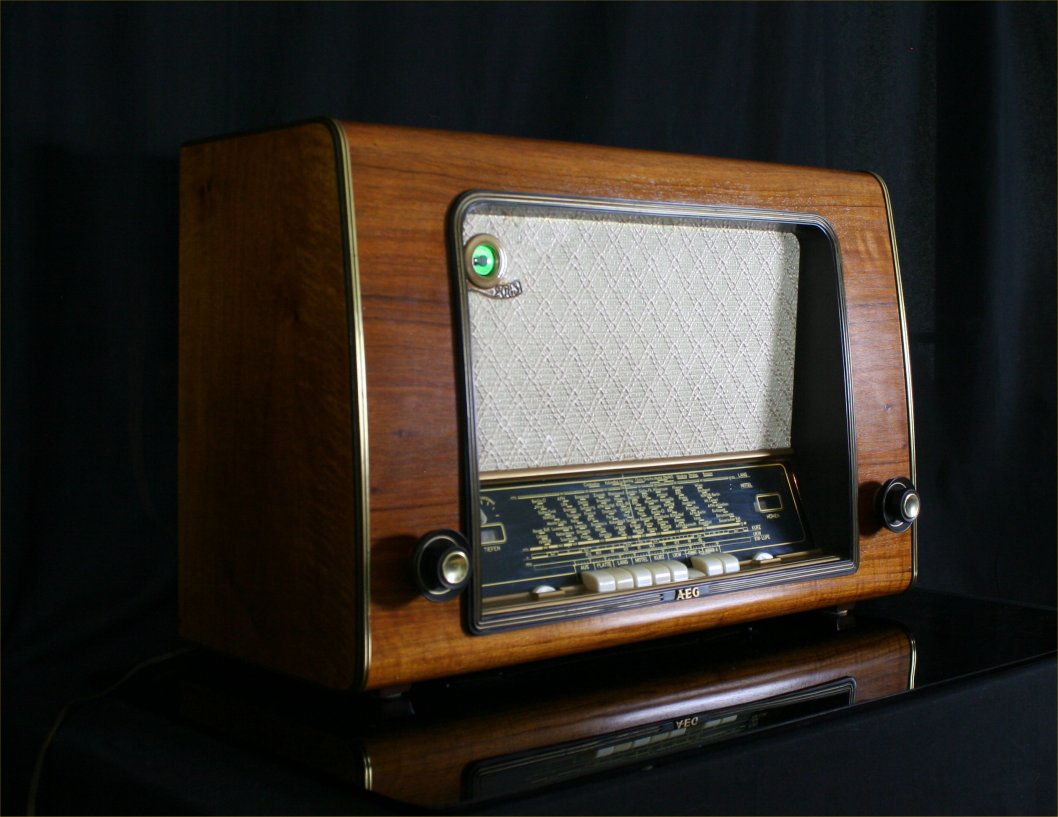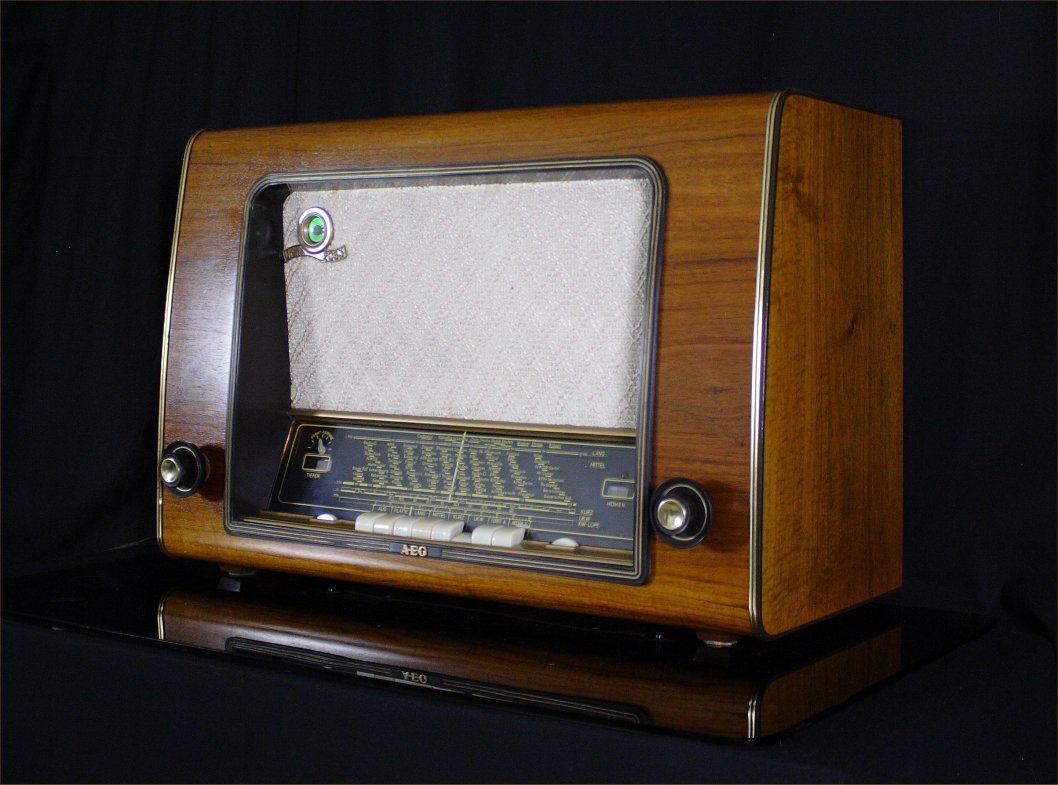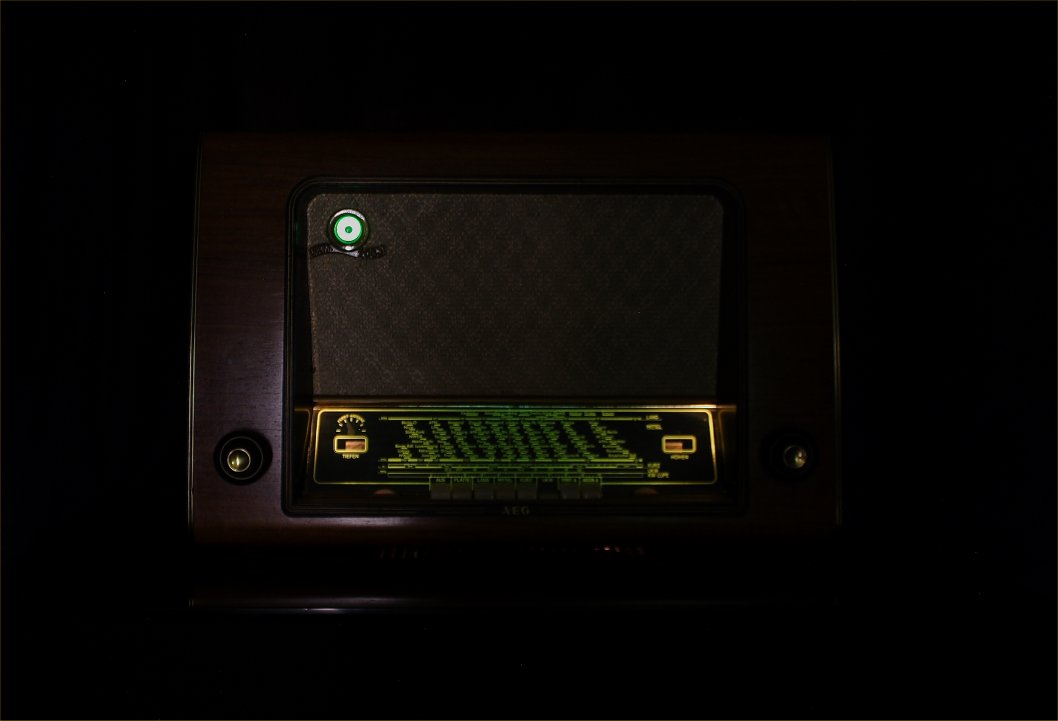
AEG 2083
ATTENTION PLEASE:
This page will be deleted in February 2018.
Click this link Luxuryradios
to visit the new page. Thank you.

Telefunken
Orchestra 53 and AEG 2083 are exactly the same device under a different
name.
It
is important to underline that Telefunken is a joint venture between AEG
and Siemens. It was created in order to produce professional and consumer
radio devices.
In
1953 it was Telefunken's top quality model. The brand was one of the most
prestigious german companies.
This device is characterized by a great number of remarkable features.
An
example is the FM oscillator stage for which an expensive ECC81 tube with
high gain was employed.
An extra medium frequency stage was added in all bands in order to obtain
a better sensitivity and selectivity than other excellent german devices.An
aerial amplifier stage for AM bands was added in order to further improve
the sensitivity in these bands that were extensively employed at that
time.
Equally refined solutions were used on the Output stage
Pure A class with a powerful EL12 tube was used on the output stage.
Usually the outupt transformer distorts the sound. The bigger the output
transformer
the less the sound is distorted. This device has a very big transformer.
Moreover, to balance the frequency response a feedback system was used.
Professional
louspeakers were used, the same that were employed in some theater loudspeakers.
Clearly a greater number of the latter was used in theaters.
Due to its high quality the woofer is usually traded on ebay for USD 180.
With
this business card to introduce it, this device cannot but save some great
surprises for us.
With its stable tuning and relaxing sound the Orchestra 53 can be easily
played in spacious rooms.
For those who want to start a collection with a great piece.











Back
to my Telefunken Concertino TS’s review where I argued that the peculiar
tuning lever and its fly-wheel reminded me of Fellini.
With this device I would update my argument saying that it reminds me
of “The Great Beauty” where Fellini is undoubtedly still a strong
presence.
Superheterodyne IF: 468/10700
9
AM Circuits
11 FM Circuits
Wavebands:
Medium Waves (OM)
Long Waves (OL)
Short waves (OC)
FM (UKW)

3 Loudspeakersi:
1 Midrange
1 Electrostatic Tweeter
Dimensions
(LHD):
26 x 17.3 x 11.4 inch
Net
weight: 36 lb 5.5 oz
8 tubes: ECC81 EF41 ECH81 EF41 EM35 EF41 EABC80 EL12
Rotating OM aerial

AERIALS
Inside the cabinet there is a dipole for FM reception and a ferrite rotating aerial for AM reception.
The reception
sensitivity with internal aerials is very good.
Using
an external aerial sensitivity is further increased.
This unit was in fact produced in a period when there were not many radio stations and those available fairly apart from each others.
Ferrite
aerial can be rotated from the outside to achieve a perfect tuning of
the device in the AM.
In this picture see the rotation mechanism and the position indicator
of the aerial.
TONE CONTROL WITH LEVEL INDICATION
The tones control system is very efficient. Above the large tone control knobs there is a band that lights up gradually indicating the emphasis on the band on which it acts.




The
tuning system is another gem.
The unit is equipped with mechanisms for keeping separate the AM and FM
bands.
The tuning knob is single but a selector switch commutes into cable systems
(all in steel) and pulleys separated depending on the band.
The movement is transferred to both mechanisms with a system of pulleys and separated gears


CONTROL PANEL
In the
high left side corner we find the magic eye that indicates the perfect
tuning station.
To the left is the volume control (with loudness built-in). Coaxially
there is the ferrite aerial control.
On the left side of the glass we can see the aerial position indicator.
Continuing we find the FM and AM main display for Long Wave Medium and
Court bands.
Under the dialglass we find the bass control equipped with indicator on
the main dialglass.
To the right in the order there are the OFF, Turntable, LW, MW, SW, FM,
Ferrite aerial and External aerial keys.
Further we find the treble control equipped with indicator on the main
dialglass.
Finally, there is the tuning knob.


LOUDSPEAKERS
There
are three loudspeakers, which I have already described in the initial
comment.
The woofer is really big and efficient.
The radio is equipped with a 18 cm ( 7 inches) Midrange and a conical
electrostatic tweeter.

REAR SIDE
Output
for external speakers.
Socket for recorder (tonbandgerat).
Turntable input (Tonabnehmer)
AM and FM aerial inputs and ground socket.
RESTAURO
I only still have the two that are posted down below.



CONTACTS
ITALIA
& Technical, Info
Email: Giovanni
- Cell: +39.331.6016062
INTERNATIONAL
Business
public relations Asia - Australia - Email:
Giuliana
Business
public relations Europe - America - Email:
Lisa
- Ph +1 937 825 0433 Ohio
- USA